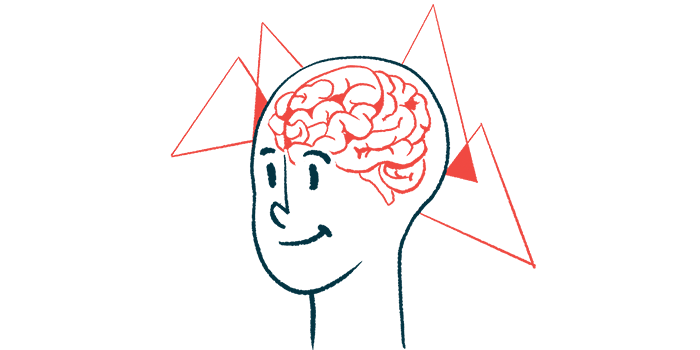Blocking KCNJ2 protein may reduce risk of ALS after brain injury: Study
Findings could have potential for athletes, others at high risk for TBI

In people who experience a traumatic brain injury, or TBI — which is linked to a greater likelihood of developing amyotrophic lateral sclerosis (ALS) — blocking the activity of a protein called KCNJ2 may lower the risk of ALS, according to new research done in lab models.
“Targeting KCNJ2 may reduce the death of nerve cells after TBI,” Justin Ichida, PhD, a professor at the University of Southern California and the study’s co-author, said in a press release.
“This could have potential as either a post-injury treatment or as a prophylactic for athletes and others at high risk for TBI,” said Ichida, also a principal investigator at the Eli and Edythe Broad Center for Regenerative Medicine and Stem Cell Research at USC.
In their study, the researchers presented a lab model — “a human organoid platform for the discovery and validation of modifiers of … injury” — that aims to help in the development of novel treatments for people who experience a TBI.
Titled “KCNJ2 inhibition mitigates mechanical injury in a human brain organoid model of traumatic brain injury,” the study was published in Cell Stem Cell.
Researchers seek to bridge gap from rodent to human models
A history of traumatic brain injury is one of the strongest risk factors for ALS and other neurodegenerative diseases. Presumably, injury to the brain causes changes in brain cells that set the stage for further disease. However, the specific mechanisms are not fully understood, and most of what is known has been deduced from experiments in mice.
“Although current TBI models — predominantly rodent-focused — have been instrumental in gaining insights into neurodegenerative mechanisms, efforts to develop effective human-relevant therapeutic strategies have been limited,” the researchers wrote.
To gain greater insight, and potentially find strategies to mitigate these mechanisms, a team of scientists, mostly from the Keck School of Medicine at USC, conducted a series of experiments using patient-derived brain organoids.
Organoids are a type of lab model in which cells are grown in a three-dimensional structure that more closely mimics the architecture of cells in the body, rather than growing the cells in a dish as is traditionally done in lab experiments. This model has the advantage of using human cells, complementing previous work in mice.
To study the effects of physical injury to these cells, the researchers devised a system where they damaged organoids using high-frequency sound waves.
“Our mechanical injury model represents a starting point for bridging the translational gap from rodent to human models of TBI,” the researchers wrote.
In an initial battery of tests, the researchers demonstrated that cells in this model show many of the same molecular changes that have previously been reported in mice. Among the notable molecular changes, a protein called TDP-43 formed abnormal clumps in damaged neurons. Similar clumps of the TDP-43 protein are a hallmark of ALS.
The scientists further showed that cell survival was improved when the organoids were treated with a chemical to reduce abnormal TDP-43 accumulation. This illustrates “that TDP-43 dysfunction is a major driver of injury-induced neuronal death in organoids,” they wrote.
These results “suggest that targeting TDP-43 may be important for mitigating neuronal injury and death after TBI,” the scientists added.
Higher levels of KCNJ2 protein linked to risk of ALS
When the researchers performed similar experiments using organoids derived from people with an ALS-causing mutation in the C9ORF72 gene, there was substantially more abnormal TDP-43 accumulation than was seen in organoids from people without the disease.
“Together, these data show that C9ORF72 [ALS] patient organoids have enhanced susceptibility to TDP-43 loss of function following … injury, which may lower the threshold for disease,” the researchers wrote.
“These findings highlight TDP-43 dysfunction as a potential mechanistic link to explain how TBI and genetic mutations can synergize to increase the risk of long-term neurodegenerative diseases,” they added.
In their experiments, the researchers noticed that organoids carrying an ALS-causing mutation tended to express higher levels of a protein called KCNJ2. When they treated organoids with a chemical to block this protein shortly after inducing injury, the cells had better survival with fewer abnormal TDP-43 aggregates.
We found that small molecule inhibition of KCNJ2 [one hour] post-injury was sufficient to improve neuronal [nerve cell] survival.
Further experiments in mouse models consistently showed that blocking KCNJ2 reduced damage to neurons following brain injury.
“We found that small molecule inhibition of KCNJ2 [one hour] post-injury was sufficient to improve neuronal survival,” the scientists wrote.
This finding implies that blocking KCNJ2 could be a useful prophylactic or preventive treatment to reduce the risk of future neurological disorders in people with TBI, the scientists noted.
The team stressed that further work is needed to verify these findings and figure out how to apply them in clinical settings. However, according to the researchers, such preventive treatments might be especially useful for people at a high risk of traumatic brain injuries, such as athletes who play rough contact sports.








